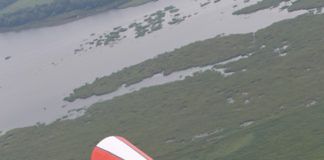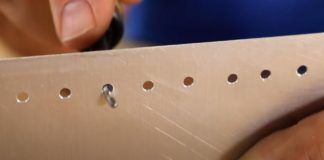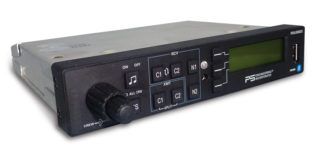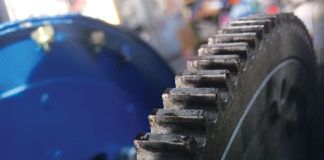“Just be careful in there Mr. Dye—those boron struts are each worth more than your annual salary!”
At the time, I was peering through the hatch into the internal wing structure of Rockwell Orbital Vehicle #105—soon to be known as Space Shuttle Endeavour—and getting ready to crawl inside to do a pre-delivery airframe inspection. The technician helping me get ready to enter the wing wanted to make sure I understood just how important it was to watch my step. The struts in question—very thin-walled cylinders with attachment points on each end—actually formed the structure of the wing “ribs” and were easily damaged if you weren’t careful in moving about. Summoning up the skills I learned as a cave explorer in my youth (“damage nothing” was the motto), I crawled into the wing with my flashlight in my mouth and hoped not to tear my white bunny suit.
The purpose of this “management Inspection” was to determine if the airframe was in a condition good enough for NASA to accept it from the contractor who was building it in Palmdale, California. If it passed muster, it would then be shipped to the Kennedy Space Center in Florida for final finishing and equipment installation before its first flight in about two years. NASA assembled a group of senior engineers with management credentials for this two-day trip to the high desert to fill a square on the checklist to that first flight, and since I was one of the few folks on the prospective list with hands-on airplane building and maintenance experience, I was a shoe-in for the visit. And I never passed up an opportunity to visit the Mojave.
The inspection was like any other airplane inspection—you look for fit and finish, acceptable cable and tubing retention, safety wire—all of the things that make the craft airworthy. Obviously, the men who built it felt it was up to snuff, or they never would have let us in the building—but even then, the airframe began collecting a myriad of colored Post-it notes highlighting areas we wanted addressed. This wasn’t a knock against anyone—it just sometimes takes a fresh set of eyes to spot anomalies that have become familiar to those too close to the project.
All of this was on my mind recently as I slowed down to enter the pattern at San Martin/South County Airport in Santa Clara County, California. The builder of a soon-to-be-flying RV-7 had advertised an “airplane inspection party,” inviting builders who were interested to come and pick apart his work before calling for the DAR to come for a licensing visit. Having a large number of experienced builders and opinionated pilots (are there any other kind?) drop in to dissect your many years of careful work takes intestinal fortitude of the highest order—and it shows a commitment to honest, open risk management that should be our standard in the Experimental world.
Inspections can be like check rides or a test in school: something that makes a person nervous and afraid. But this inspection party was more of a celebration—a coming out with a challenge by the builder: please, find the flaws in my project! He was open and honest about the fact that he wanted help, and not afraid to take criticism and critical comments about his work.
Truth be told, it was one of the nicest building jobs I have seen in all my years of working on airplanes and being a tech counselor. When a builder takes the time to lay the flat EGT wires against each other in a perfectly rectangular bundle, you know he has paid attention to details.
Yet as good as it was, there were at least a dozen things that other builders found that the owner needed to look at. I personally found only one thing that I thought needed careful attention, and that is the point of having multiple “eyes on” the target plane—everyone will find something different.
Don’t be afraid to let others find the flaws in your work; the truth is, anyone competent enough to find your mistakes and omissions has made countless numbers of their own. It’s how we all learned. Take the inspection to heart and realize that you are probably just inches from the finish line—take your time, analyze the comments, and fix what needs to be fixed.
Whether you’re building a Cub or a space shuttle, everything is open to scrutiny—it’s how we keep each other alive to fly another day.
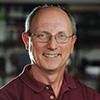
![]()
Paul Dye retired as a lead flight director for NASA’s Human Space Flight program, with 40 years of aerospace experience on everything from Cubs to the space shuttle. An avid homebuilder, he began flying and working on airplanes as a teen and has experience with a wide range of construction techniques and materials. He currently flies an RV-8 that he built in 2005 and an RV-3 that he recently completed with his pilot wife. A commercially licensed pilot, he has logged over 4500 hours in many different types of aircraft. When not writing on aviation topics, he consults and collaborates in aerospace operations and flight testing projects.

